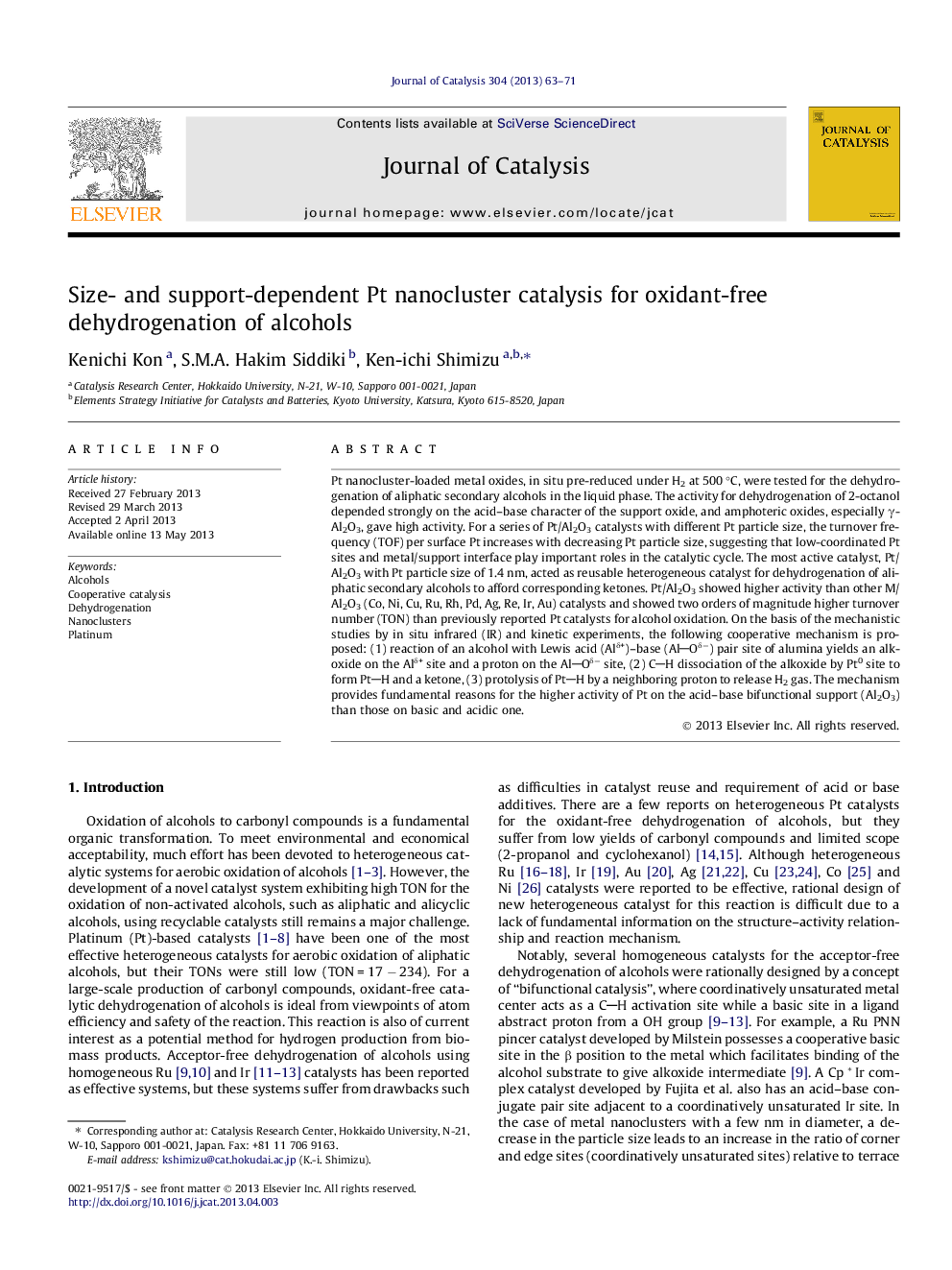| Article ID | Journal | Published Year | Pages | File Type |
|---|---|---|---|---|
| 61223 | Journal of Catalysis | 2013 | 9 Pages |
•Reusable catalyst for oxidant-free oxidation of aliphatic secondary alcohols to ketones.•Higher activity than other M/Al2O3 (Co, Ni, Cu, Ru, Rh, Pd, Ag, Re, Ir, Au) catalysts.•TOF increases with decrease in Pt nanocluster size.•Cooperative mechanism between low-coordinated Pt0 site acid–base conjugate pair site of alumina.
Pt nanocluster-loaded metal oxides, in situ pre-reduced under H2 at 500 °C, were tested for the dehydrogenation of aliphatic secondary alcohols in the liquid phase. The activity for dehydrogenation of 2-octanol depended strongly on the acid–base character of the support oxide, and amphoteric oxides, especially γ-Al2O3, gave high activity. For a series of Pt/Al2O3 catalysts with different Pt particle size, the turnover frequency (TOF) per surface Pt increases with decreasing Pt particle size, suggesting that low-coordinated Pt sites and metal/support interface play important roles in the catalytic cycle. The most active catalyst, Pt/Al2O3 with Pt particle size of 1.4 nm, acted as reusable heterogeneous catalyst for dehydrogenation of aliphatic secondary alcohols to afford corresponding ketones. Pt/Al2O3 showed higher activity than other M/Al2O3 (Co, Ni, Cu, Ru, Rh, Pd, Ag, Re, Ir, Au) catalysts and showed two orders of magnitude higher turnover number (TON) than previously reported Pt catalysts for alcohol oxidation. On the basis of the mechanistic studies by in situ infrared (IR) and kinetic experiments, the following cooperative mechanism is proposed: (1) reaction of an alcohol with Lewis acid (Alδ+)–base (AlOδ−) pair site of alumina yields an alkoxide on the Alδ+ site and a proton on the AlOδ− site, (2) CH dissociation of the alkoxide by Pt0 site to form PtH and a ketone, (3) protolysis of PtH by a neighboring proton to release H2 gas. The mechanism provides fundamental reasons for the higher activity of Pt on the acid–base bifunctional support (Al2O3) than those on basic and acidic one.
Graphical abstractFigure optionsDownload full-size imageDownload high-quality image (122 K)Download as PowerPoint slide
